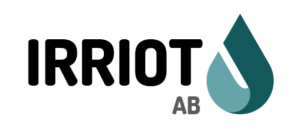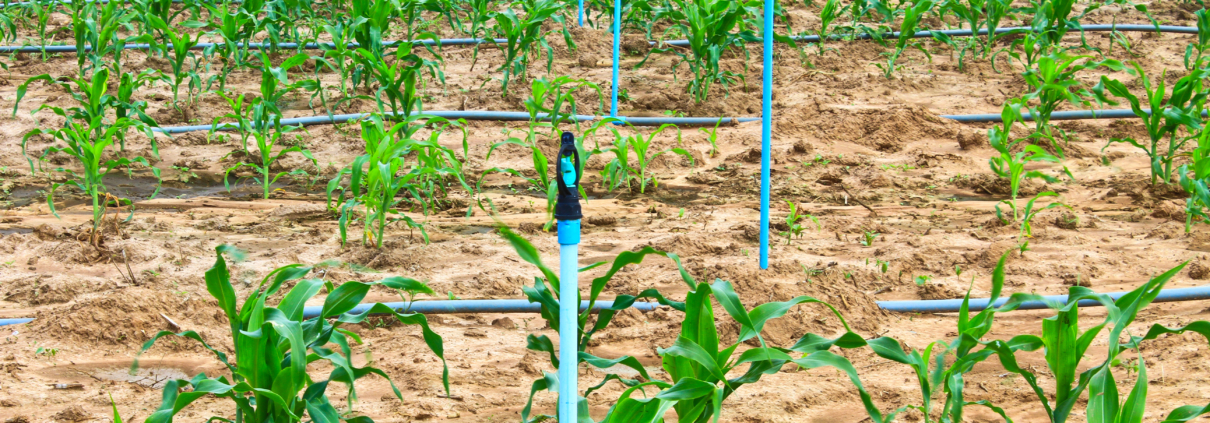Sensor based irrigation automation
IRRIOT features unique flexibility in configuring the fully automated irrigation. The irrigation can be directly controlled by sensors, registered in the IRRIOT system, or can be set for sensor control during the user defined time schedule – automatic scheduled irrigation.
Automatic enabling/disabling of irrigation is achieved by Automation Conditions. Each valve in IRRIOT has its individual set of automation conditions.
Automation condition is a combination of parameters that include:
- Sensor (Base or Remote)
Any sensor detected in the system can be assigned to an automation condition; - Mode of operation
The condition can be configured in different modes:- Off – condition is disabled
- On – condition is always on
- Corr – condition is in corrective mode;
- DirDrv – condition is direct drive
- Trigger level (logic and threshold)
Defines what fulfils the condition - Reset level (optional)
Creates hysteresis when resetting a triggered condition
Up to 5 different automation conditions can be assigned to a valve. All valves in the system are by default assigned one automation condition – the switch sensor connected to the Base sensor position 1. This is where typically the Rain Sensor is wired in the installation. This default condition is set to trigger when the sensor breaks the circuit, which is typical for rain sensors (normally closed).
Once the condition triggers, the executing program shuts the valve that owns this condition, if open. Notice that unless in direct drive mode, the automation conditions apply to scheduled irrigation only, i.e. to automatic programs. The programs run in manual mode are not subject to any sensor automation. The manual programs will always run to the end.
Direct Mode vs Scheduled Irrigation
The Direct Mode (or Direct Drive) is the mode of operation when the sensor level is in direct control of the irrigation valves. This mode allows the system to promptly react to the changes in the external conditions, such as frost. The obvious limitation of the direct drive is the water supply. In commercial irrigation the available volumes of water withdrawal are always limited. The system configured for direct drive should be properly dimensioned to withstand unpredicted water withdrawals.
Some cases for direct sensor controlled irrigation include:
- Frost-protective irrigation;
- Cooling;
- Mist.
The direct control means that the user defined levels will cause immediate actuation of the corresponding valves.
The scheduled irrigation is implemented by a user defined program. A program is a sequence of valve openings. The water distribution is time divided and therefore fully predictable. The drawback of a program is that reaction to an external condition can be significantly delayed (until the next watering occasion).
A program can also be executed manually, i.e. right now. The manual programs disregard its valves’ automation conditions. Hence the manual programs are not interrupted by any external condition.
IRRIOT has a special type of program – manual valve delayed. The user can configure any single valve to open at a predefined time. This is a program in its simplest form. The delayed manual valve does not regard automation conditions.
Switch Conditions
Example: By default, the rain sensor connected to Base Unit sensor input 1 will shut any open valve in a running program. For the zones (valves) not exposed to the rain, the default condition should be set to OFF or simply removed.
For a switch type sensor, the trigger logic is simple: either break or short circuit. Historically a switch type sensor is connected in series with the power supply, and when it triggers it breaks the circuit, causing a stop in the ongoing operation. Today most switch sensors are available in normally open and normally closed variants.
The condition with a switch type sensor would reset automatically when the trigger condition is no longer met. A switch can only have on and off state – when not on, it is off. Hence it is not possible to define Reset logic for such conditions.
Level Conditions
More sophisticated conditions have a level that has to be passed, in any direction, in order to trigger this condition. For example a Rain Gauge sensor can be set to interrupt ongoing irrigation if the level reaches 15mm over the past 24 hours.
Another example is a soil moisture sensor that can stop the program if the level is at 36%. Such a condition will strive to keep the level of moisture constant at the defined value. How much the soil will dry between the watering occasions depends on external conditions and the frequency of watering occasions:
The condition is reset as soon as the trigger level is no longer met. So there is no Reset logic and level defined for such conditions. As soon as the moisture drops below the trigger threshold value, the condition is reset and the next coming irrigation occasion will take place as usual.
If such condition is defined in direct drive mode, the soil moisture level will be fluctuating around the pre-set level, causing frequent waterings.
Range Conditions
While the Level Conditions is a natural way of automating, in many cases they are not sufficient. Consider for example frost protection. The automation is activated when the temperature drops below 1C. With the Level Condition as soon as the temperature rises above this level, the valves are shut. This will do damage to the crops. The proper automation would allow the higher temperature and ensure ice wash off before stopping the irrigation.
Similarly, at over temperatures the automation should allow the proper cooling of the plants before it is completed.
Even when it comes to the soil moisture, most growers do not want the same level of moisture at all times. When the plant is growing a certain level of stress facilitates healthy development of the root system. So the automation should both moisturize the soil to the right level, and then dry it out as configured before irrigating again.
To fulfil the requirement of these more sophisticated scenarios, the Range Conditions can be used. A range condition has Trigger level and Reset level set separately.
The chart below illustrates range automation as an example of leaf cooling. The parameters for a condition are:
Sensor: WS1.Temp (temperature sensor)
Mode: Direct Drive
Trigger level: “greater than” threshold 36C
Reset level: “less than” threshold 26C
Sensor: WS1.Temp (temperature sensor)
Mode: ON (scheduled irrigation)
Trigger level: “greater than” threshold 36C
Reset level: “less than” threshold 26C
Scheduled irrigation program at 11:00, 12:00, 13:00, 14:00 and 15:00.
Notice that cooling at 11:00 did not reduce the temperature to the Reset level. So at 12:00 the cooling continued until the Range Condition was reset. The temperature started to climb. However at 13:00 and 14:00 the trigger level was not reached, and the watering was skipped.


